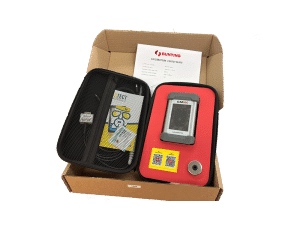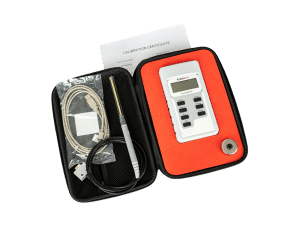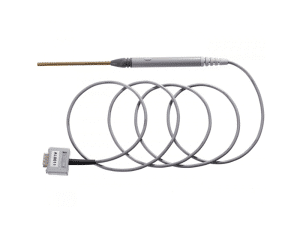Gaussmeters and Hall Probes
What is a Gaussmeter?
A Gaussmeter is a device used to measure the strength and direction of magnetic fields. A Gaussmeter typically consists of a sensor or probe that detects the magnetic field and a display unit that shows the measurement in units of Gauss or Tesla. Gaussmeters are commonly used in various industries and research fields to measure and analyse magnetic fields accurately.
Buy High-Accuracy Gaussmeters and Hall Probes Online at e-Magnets
e-Magnets is your one-stop shop for professional-grade gaussmeters and Hall probes for measuring magnetic field strength. We offer a wide selection of gaussmeters and probes to suit various applications, all fully calibrated and housed in protective cases for maximum durability.
What are Gaussmeters and Hall Probes?
Gaussmeters: Handheld instruments for measuring magnetic field strength (also known as magnetic flux density). Measurements are typically displayed in Tesla, Gauss, Amps/meter, or Oersted.
Hall Probes: Sensors that detect magnetic fields when a current is passed through them. They come in two main types:
Transverse Hall Probe: This long, thin probe is ideal for measuring fields within small gaps, such as those found in speaker assemblies.
Axial Hall Probe: This is a cylindrical probe that measures the magnetic field along its axis. It offers a single measurement method but requires distance compensation for accuracy.
Our Gaussmeter Range:
GM08 Gaussmeter: Similar to GM07 but with RS232 & USB connectivity, memory storage, and uncorrected analogue output. Offers data logging and remote control via PC software. Includes the same accessories as GM07. (NPL traceable calibration, ±1% accuracy)
GM09 Gaussmeter: This touchscreen handheld meter has a rechargeable battery and USB data logging. It works with various probes (sold separately) for magnet polarity, field strength, and residual magnetism testing. The device features application modes for specific tasks, like Fit-to-Fly testing. The standard kit includes the meter, transverse probe, zero flux chamber, charging cable, and carrying case. (NPL traceable calibration, ±1% accuracy)
Additional Hall Probe:
AP002 Axial Hall Probe: Explicitly designed for GM07/GM08/GM09 gaussmeters, offering complete interchangeability.
Choosing the Right Probe:
Axial Probe: Sturdy design, ideal for general measurements.
Transverse Probe: Perfect for flat surfaces and small air gaps, but less robust.
Order Your Gaussmeter and Hall Probes Today!
eMagnets offers fast and reliable shipping on all gaussmeters and probes. Please browse our selection online or contact us for assistance choosing the right equipment.



